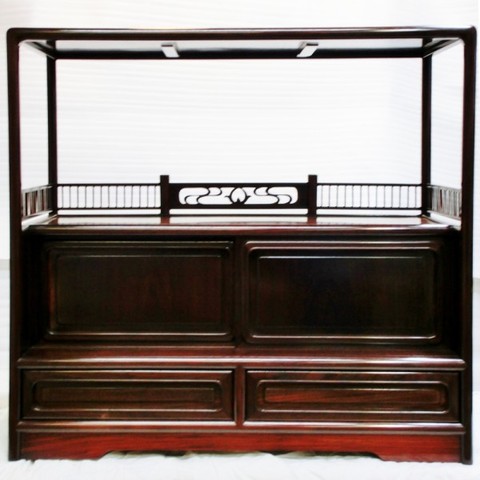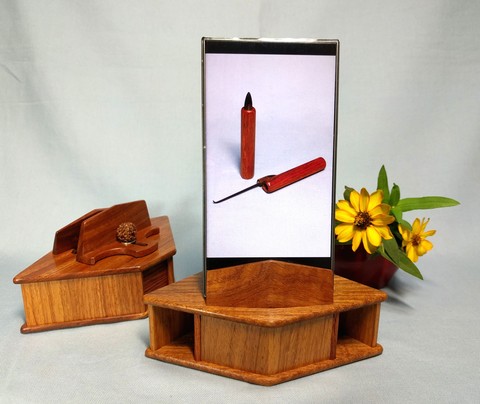
唐木製品は、奈良時代の遣唐使によって持ち帰られました。珍しい木が使われていたため、この木を唐の木、唐木と呼んだことが唐木指物のいわれです。
江戸時代に入ると唐木材はすべて長崎に運び込まれ、大阪の薬種問屋がこれを引き受けていました。大阪の唐木製品は手作りで、伝統的な技術・技法を用いて、現在の生活様式に合うように工夫、改良されています。

Fine rarewood cabinetry was brought to Japan by the envoys who visited Tang dynasty China, hence the name of these woods in Japanese is literally "woods of Tang" or karaki. During the Edo period (1600-1868) when foreign intrusions were mostly shunned, rarewoods come into the country via Nagasaki and they were distributed through a wholesaler of medicines in Osaka. Currently, the same rarewoods and traditional techniques are being used to make not only traditional articles but also ones consistent with today's life-style such as cabinets, tables and boxes. The lasting qualities and general acknowledgment which fine pieces of furniture and cabinetry made of such rarewoods as sandalwood and ebony command is unfailing.
The band of craftsmen skilled in working these woods is small, now numbering 170, with 21 nationally recognized Master Craftsmen among them. There are 43 firms situated in a number of areas making boxes, stands, desks and other finely crafted pieces of cabinetry.

スマートフォン用スピーカー・五角型
携帯用・耳掻き